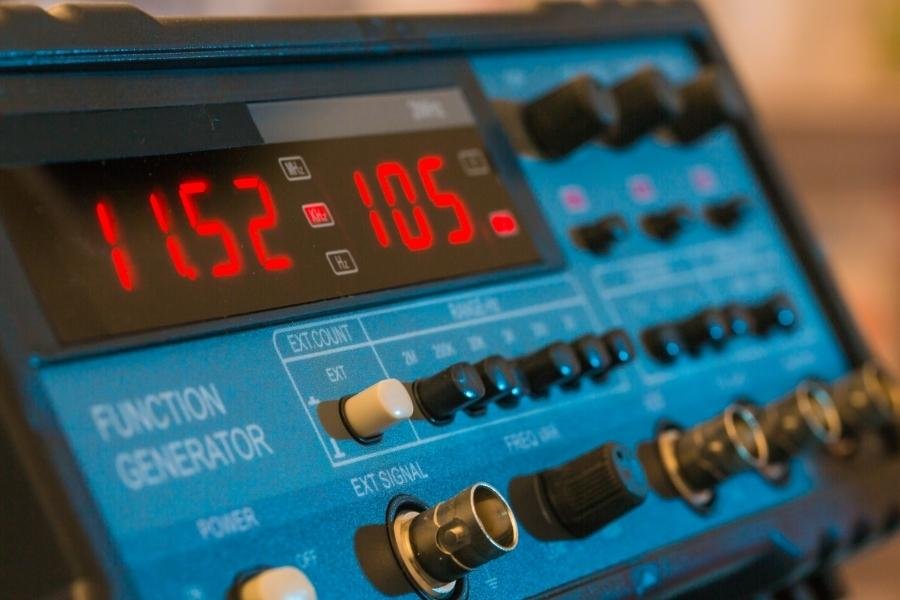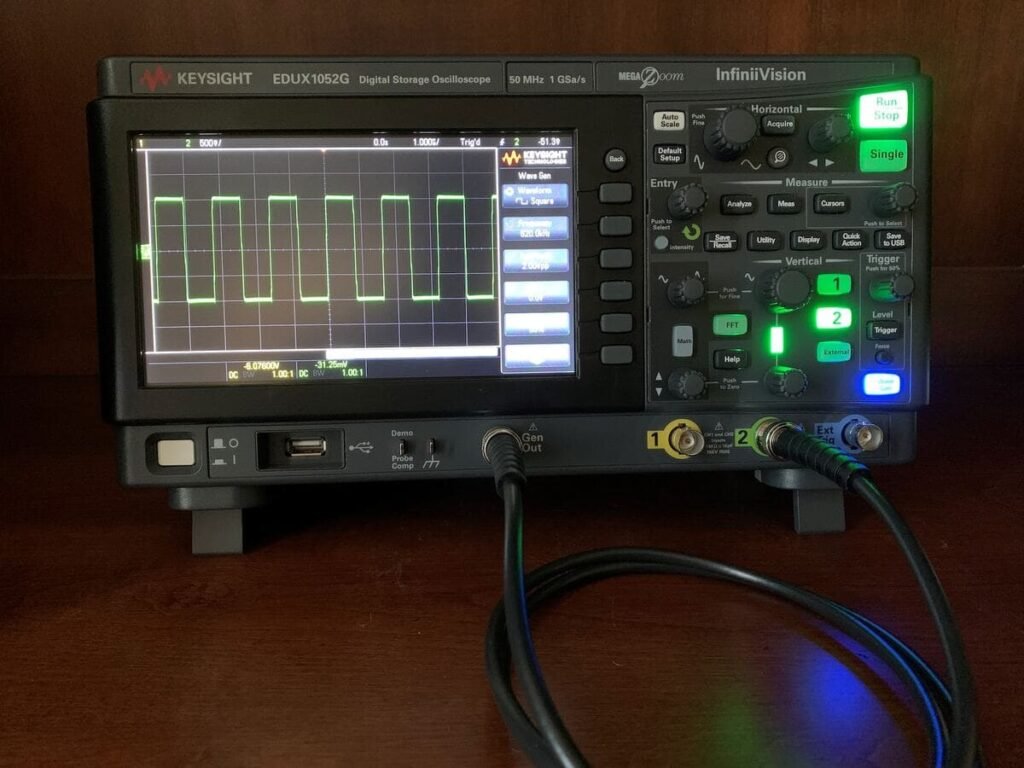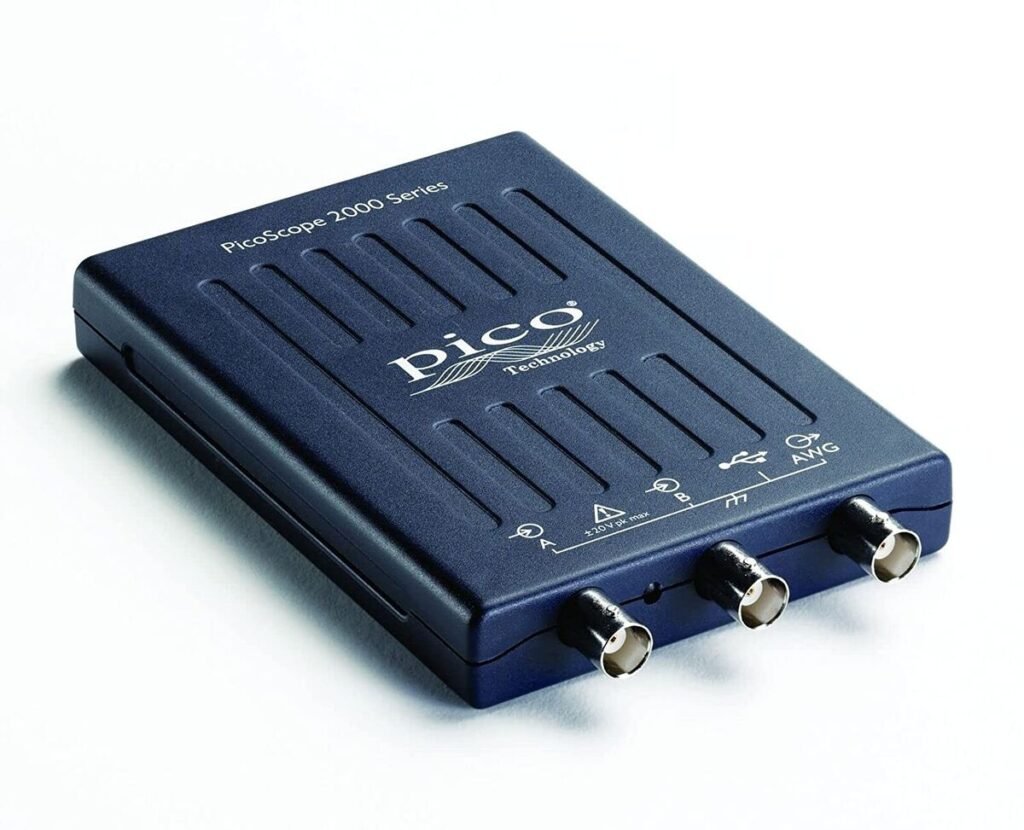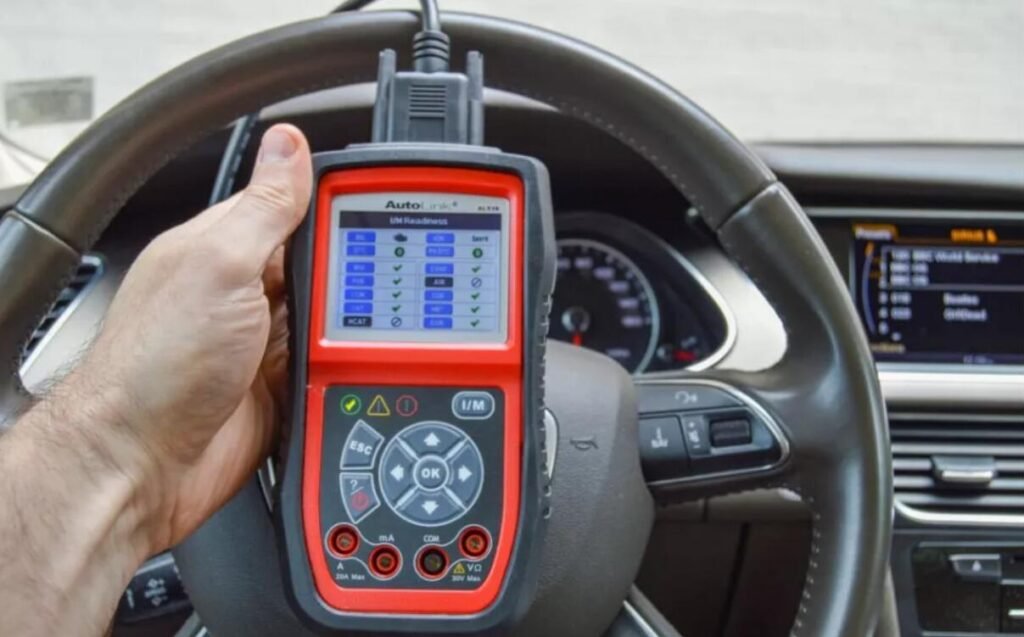What is a Signal Generator? (2024 Guide)
When you think of a signal generator, you might think of complex, expensive lab equipment. However, a signal generator is actually an affordable device that anyone can use.


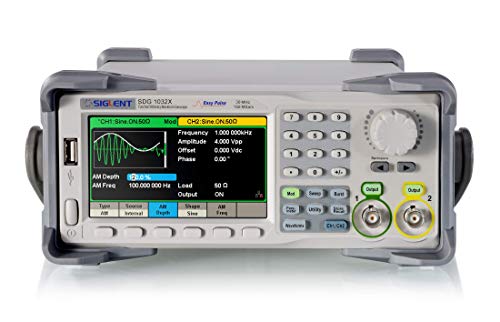



Don’t forget to also peruse our oscilloscopes, spectrum analyzers, and other electronics lab tools.
You probably already have everything you need to get started somewhere in your garage or workshop. If not, they’re available inexpensively on sites like Amazon and eBay.


A conventional signal generator is an indispensable tool for troubleshooting electronics projects— and it’s surprisingly easy to operate one once you know how! In this article, we’ll go through the different types of generators and explain how each one works. Next, we’ll look at some examples and give tips on how you can use them for your next project.
What Is A Signal Generator?
A signal generator is an electronic device that produces signals such as sine waves or square waves. Signal generators are used to test circuits, as well as troubleshoot issues with existing equipment.
The most common use for signal generators is to test the operation of speakers. Speaker circuits are very complicated and often require the use of signal generators to make sure they’re functioning properly.
There are two main types of signal generators: analog and digital. An analog signal generator produces a continuous sine wave that can be tweaked to produce a wide range of frequencies.
A digital signal generator creates a series of numbers that represent the signal graphically.


Why Use A Signal Generator?
A signal generator is a must-have for anyone doing electronic repairs or modifications. It allows you to test and troubleshoot circuits that might have been damaged during installation or have short- or open circuits.
Signal generators are especially useful for speakers, which are very complicated circuits and often require special tools to test properly.
Signal generators enable you to test speakers without having to purchase and connect a voltmeter.
Voltmeters are very accurate, but they’re also expensive and require an understanding of how to wire them up correctly.
Types Of Conventional Signal Generators
There are two main types of signal generators: analog and digital. An analog signal generator produces a continuous sine wave that can be tweaked to produce a wide range of frequencies.
A digital signal generator creates a series of numbers that represent the signal graphically. A conventional signal generator can be used to test any circuit with wires, which includes most home appliances.
Analog Signal Generator – An analog signal generator produces a continuous sine wave at a specific frequency. It can be adjusted by turning a dial to change the frequency of the wave. This type of generator is best for troubleshooting audio circuits and other devices that require a continuous sine wave.
Digital Signal Generator – A digital signal generator produces a series of numbers that represent the signal graphically.
When you adjust the settings, you’re selecting a specific pattern that represents a sine wave. This type of generator is best for troubleshooting digital circuits or devices with digital displays.


How To Hook Up A Conventional Signal Generator
The first step when using a signal generator is to make sure that your circuit is complete.
Check all the connections to make sure that wires are properly connected and have the correct polarity.
If the circuit is incomplete, you risk causing damage to the generator and your equipment.
If the circuit is complete, you can start setting up the generator. First, plug it into a wall socket and set the voltage.
Next, set the frequency. You can set the frequency as a discrete tone or as a continuous beep.
Once you’ve set up the generator, you can test your circuit. First, make sure that the circuit is disconnected from power.
Then, connect the speaker wires to the output of the generator and turn it on.
Adjusting The Hookup: Finding Your Frequency
If you’re using a discrete tone, you can easily find the frequency of your signal by counting how many times the tone goes off in a second.
Finding the frequency of a continuous beep can be a little trickier. You can use an audio recording program or a graphing calculator to plot the continuous beep and find its average frequency.
If you’re using an analog generator, you can also use a frequency counter to find the frequency of your signal. Frequency counters work by measuring the frequency of your signal and displaying the result on an LCD screen.
To use a frequency counter, simply plug it into any of the generator’s output ports and press the “Start” button.
The counter will display the frequency of your signal. You can also use a frequency counter to find continuous beeps. Simply plug the counter into any port and press the “Count” button.
The counter will display the number of times the beep goes off in a certain amount of time.
Finding Your Tones: Discrete Tones And Continuous Beeps
If you’re using a discrete tone, you can use a tone generator to locate the tone that was damaged or that you need to replace.
Simply plug the speaker wires into the output of the tone generator. If you’re using a continuous beep to troubleshoot a circuit, you can tap the wires with a pair of needle-nose pliers and identify the wire that produces a loud knock.
You can also use a circuit board tester that can detect shorts and open circuits. If you’re using an analog generator and a frequency counter, you can use a tone generator to find the frequency of your signal.
Simply plug the speaker wires into the output of the tone generator and tap the wires with a pair of needle-nose pliers.
Finding More Shapes: Square Wave, Sine Wave, and Ramp
A square wave pattern creates a distinct “buzz” sound. A sine wave pattern creates a consistent beep sound.
A ramp pattern is a combination of a square wave and a sine wave at the same time. You can find these patterns on a digital signal generator by adjusting the settings until you hear the sound you’re looking for.
If you’re using an analog generator, you can use your ears to find a square wave pattern. A square wave creates a “buzz” sound that rises and falls like a square wave graph.
You can use the same method for a sine wave pattern. Sine waves have a consistent beep sound that rises and falls consistently.
Reviewer Final Comments
A signal generator is an electronic device that produces signals like sine waves and square waves. Signal generators are used to test circuits, as well as troubleshoot issues with existing equipment.
A conventional signal generator can be used to test any circuit with wires, which includes most home appliances.
There are two main types of signal generators: analog and digital.
An analog signal generator produces a continuous sine wave that can be tweaked to produce a wide range of frequencies.
A digital signal generator creates a series of numbers that represent the signal graphically. When you use a signal generator, you can find shorts, open circuits, and damaged wires in your circuits. You can also use a signal generator to troubleshoot your speakers and test the volume on your stereo.

